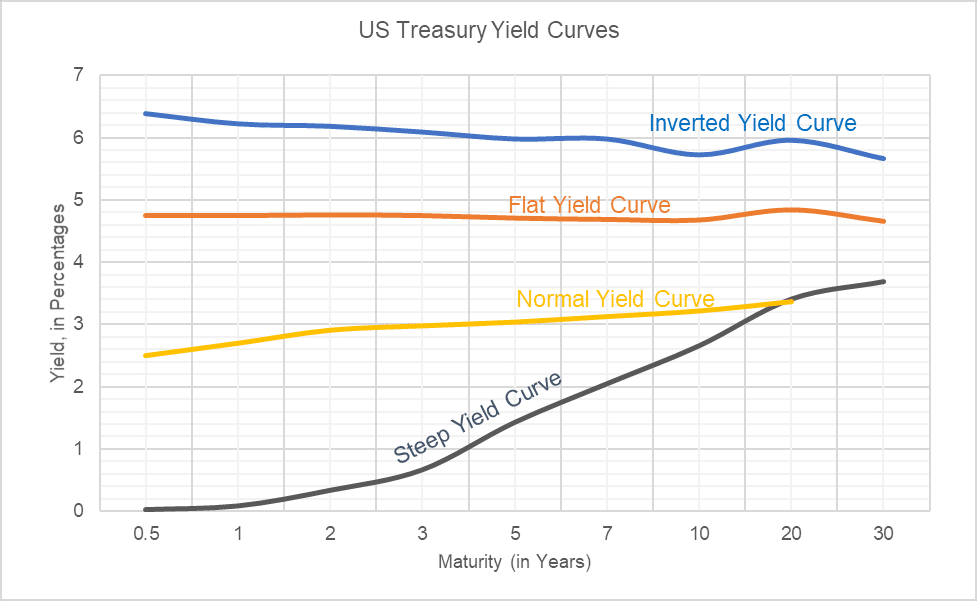The Home Mortgage Disclosure Act (HMDA), implemented by regulation C, has been in effect for almost four decades. It mandates mortgage lenders to submit information about their lending practices. Here, you’ll learn about Home Mortgage Disclosure Act and its purpose, why it’s important, and how to get HMDA data online.
What Is the Home Mortgage Disclosure Act?
The Home Mortgage Disclosure Act (HMDA) is a federal law passed in 1975 that compels mortgage lenders to preserve records of critical information about their lending operations and disclose it to regulatory agencies. It was implemented by the Federal Reserve through Regulation C. In 2011, the Consumer Financial Protection Agency (CFPB) took over the rule-writing authority of Regulation C.
Understanding the Home Mortgage Disclosure Act
Regulation C and the Home Mortgage Disclosure Act both include obligations for regulatory filings and public disclosures. Title 12, Chapter 29 of the United States Code contains the full Home Mortgage Disclosure Act. Regulation C is also an important component of the Act. The Federal Reserve issued Regulation C to supplement the Act’s obligations and to specify certain additional standards that banks must follow.
In general, the principal goals of the Home Mortgage Disclosure Act and Regulation C are to monitor mortgage lenders’ geographic targets, provide a method to identify exploitative or discriminatory lending practices, and disclose mortgage market information to the government. The HMDA also supports government-sponsored community investment initiatives by providing a tool for analyzing resource allocation.
Government agencies, consumer groups, and bank examiners utilize the data to determine compliance with different federal fair housing and credit regulations, such as the Equal Credit Opportunity Act, the Fair Housing Act, the Community Reinvestment Act (CRA), and state laws.
In line with the Home Mortgage Disclosure Act of 1975, the Federal Financial Institutions Examination Council (FFIEC) was tasked in 1980 with easing public access to mortgage information from financial institutions.
The HMDA requires lenders to identify the gender, color, and income of persons applying for or acquiring mortgages, but the information is anonymized in the records.
What is the Purpose Of The Home Mortgage Disclosure Act?
After growing worries about credit constraints in particular urban, often minority neighborhoods, the Home Mortgage Disclosure Act was enacted. Congress believed that some mortgage lending organizations were contributing to diminishing growth in particular areas by rejecting home mortgages to otherwise qualified applicants when enacting the statute.
As a result, the major goal of HMDA and Regulation C is to keep track of the geographic areas served by mortgage lenders. It also demonstrates whether financial institutions meet the housing needs of the areas in which they operate.
The HMDA statute was also a useful instrument for public officials to track public investments in regions where they were needed. Through timely reporting, the Act aids in the oversight of community investment initiatives sponsored by government entities.
HMDA data demonstrates whether resources are being utilized properly to benefit community activities. The 1989 FIRREA amendment requires lenders to gather and submit data on application characteristics to assist government officials in identifying predatory lending practices that may undermine equitable housing credit access and enforcing anti-discrimination regulations.
Data from the HMDA is utilized to uncover the root causes of housing credit discrimination. When there is a reasonable suspicion of discrimination, the regulatory investigation focuses on whether specific classes of applicants were denied housing credit for reasons other than acceptable qualities, such as insufficient collateral.
The law does not establish a quota system of mortgage loan allocation in each geographical area where mortgage lenders are located, nor does it set rules on the specific activities of lenders.
HMDA Reporting
Some mortgage lenders are obliged by HMDA and Regulation C to keep records of specific mortgage lending information for reporting purposes. In 2019, 5,496 lenders reported 8.1 million loan originations, accounting for 88% of all expected loan originations in the United States5.
The CFPB released a final rule in April 2020 that increased the data-reporting criteria for collecting and reporting data on closed-end mortgage loans under the HMDA from 25 to 100 loans, beginning July 1, 2020.6
HMDA data enables regulators to examine mortgage loan and lending patterns in a variety of categories, including the number of pre-approvals made, mortgages granted, loan amounts, and the purposes of individual loans. The federal reporting also goes into considerable depth about the approvals of other government-sponsored loans, such as those from the Federal Housing Administration, Farm Service Agency, Rural Housing Services, and Veterans Affairs.
Federal Regulation C requires lenders to prominently display a poster in each branch office lobby with information on accessing their unique HMDA statistics.7 These statistics are also available to the public for free online at the CFPB data repository.
While these figures are obviously of interest to prospective borrowers, they may also be a valuable research tool for investors looking into banking and lending businesses. An investor can simply determine whether or not a lender’s main business is increasing by comparing statistics from the last few years.
What is the Significance of HMDA Reporting?
HMDA statistics are a comprehensive source of publicly available information on the mortgage industry in the United States. The reporting is critical for gaining a better picture of who obtains credit and which banks provide mortgages. This information also assists regulators in identifying symptoms of mortgage discrimination.
HMDA reporting can provide lenders with useful performance data.
“It can teach us a lot about our own business, what our colleagues are doing, and where we may differ and/or align,” says Kimberly Wachtel of Inlanta Mortgage in Pewaukee, Wisconsin. “Lenders can better serve their communities when they are more in tune with loan performance.” Financial institutions should evaluate their data on a regular basis , ensuring that their loan data matches their lending strategy.”
What information is included in HMDA reporting?
HDMA reporting includes information such as a mortgage applicant’s ethnicity, race, gender, and income.
“You can learn about the loan, the property attributes, the applicant demographics, and the lender for each record,” Maxwell adds.
For example, you can find out whether a borrower was approved for a mortgage or if they were denied, did not complete the application, or something else transpired that prevented the loan from being created. Loan-specific pricing and charge information, including negative spreads, is also provided, as as details on loan characteristics such as balloon payments and negative amortization. Preapprovals and loans sold from one institution to another are also included in the statistics.
To protect an applicant’s privacy, certain data, such as the applicant’s name, dates of application and activities done, property address, and credit score, are withheld from public reporting. For the same reason, additional parameters such as loan amount, age, debt-to-income (DTI) ratio, and property worth are converted to ranges.
What has Changed with Regard to HMDA Reporting?
According to Wachtel, HMDA has undergone a few changes over the years to better meet its goals, such as modifying who is required to submit the data, adding price information, and requiring more data to be collected overall.
According to Sicuranza, mortgage lenders are now expected to fill more than 100 fields across numerous data points on an annual or quarterly basis, depending on the institution’s size, using a new reporting platform.
“The increased amount of data fields, as well as changes in public accessibility and the technology interface, enable all members of the public to better understand and visualize lending patterns in their areas,” Sicuranza explains.
Financial institutions become required to publish data on home equity lines of credit (HELOCs) in 2018, which was previously optional. They were also obliged to specify coverage requirements if the institution had originated at least 100 closed-end mortgages or 200 open-end lines of credit in the previous two calendar years.
The CFPB has also recently begun requesting opinions on HMDA.
“In other words, further HMDA adjustments may be on the horizon for consumers to keep an eye on,” Sicuranza said.
Where Can I Access HMDA Data Online?
The CFPB website allows you to readily and freely obtain HMDA data. Go down to the “Download HMDA data” section, where you can download data from 2007 to 2017 or access recent data and summaries, including data for a specific financial institution. An HMDA Data Browser is also available, which allows you to filter, aggregate, download, and visualize HMDA datasets.
Home Mortgage Disclosure Act & Regulation C
The Bureau of Consumer Financial Protection is revising Regulation C to incorporate changes to the Home Mortgage Disclosure Act mandated by Section 1094 of the Dodd-Frank Wall Street Reform and Consumer Protection Act (Dodd-Frank Act). In accordance with Section 1094 of the Dodd-Frank Act, the Bureau is introducing new reporting obligations and clarifying existing ones. The Bureau is also changing Regulation C’s institutional and transactional scope. The final rule also includes substantial guidance on how to comply with both the existing and new obligations.
What Is Regulation C?
The Home Mortgage Disclosure Act of 1975 is implemented under Regulation C. Several financial institutions are required by Regulation C to provide loan data regarding the communities to which they have supplied residential mortgages on an annual basis. As a result, regulatory authorities can assess whether the lender is addressing the needs of prospective borrowers in that community adequately.
How Does Regulation C Work?
All suppliers of mortgages backed by the government in any capacity must annually disclose the number and dollar amount of all mortgages provided in the previous year. These loans must be classified according to the census tract in which the properties are located.
As of 2023, any lending institution with total assets of $50 million or less is exempt from the data collection requirements established by Regulation C.1 This includes banks, savings associations, and credit unions with total assets of $50 million or less.1 The threshold is raised on a regular basis to keep pace with inflation as measured by the Consumer Price Index (CPI). This means that the threshold could be lifted again in 2023 and beyond.
Regulation C is intended to offer information that can be utilized to:
- Assist in determining if banks, savings associations, and credit unions are meeting the housing needs of their communities.
- Assist public officials in allocating public-sector spending in order to attract private investment to areas in need.
- Help in identifying potential discriminatory lending habits and implementing federal anti-discrimination laws.
- Regulation C is not intended to promote unethical lending practices or the misallocation of credit.
Guidelines for Regulation C are subject to change as new final rules are produced. For example, in April 2020, the Bureau of Consumer Financial Protection (Bureau) revised Regulation C to raise the bar for reporting data on closed-end mortgage loans. The barrier for reporting data about open-end lines of credit was set at 200 as part of this rule change, effective January 1, 2022, following the expiration of the prior temporary threshold of 500 open-end lines of credit.
What Is Mortgage Regulation C?
Regulation C, often known as the Home Mortgage Disclosure Act, oversees the collection of data and the disclosure of certain mortgage-related information. Regulation C requires financial institutions with assets above specific criteria, such as banks, savings societies, and credit unions, to submit statistics.
Who Is Affected by Regulation C?
Regulation C applies to both closed-end and open-end consumer loans or lines of credit secured by real estate. This includes first and second mortgage loans, as well as home equity loans and lines of credit.
In Summary
The Home Mortgage Disclosure Act (HMDA) is a federal law in the United States that requires mortgage lenders to keep and report information regarding their lending practices.
HMDA data is used by regulators to increase transparency in the residential mortgage market and to track the geographic areas covered by mortgage lenders.
The HMDA act’s major objective is to provide the public with information on whether mortgage lenders serve the needs of the areas in which they are located.
Related Articles
- Owner, Check Out 5 Tips On How To Rent Your Property!
- How To Make Sure Your Business Remains HIPAA-Compliant
- What is a Schedule C Tax Form & Who Needs to File?
- FCRA COMPLIANCE: Why Employers Should be Compliant (+ Quick Tips)






